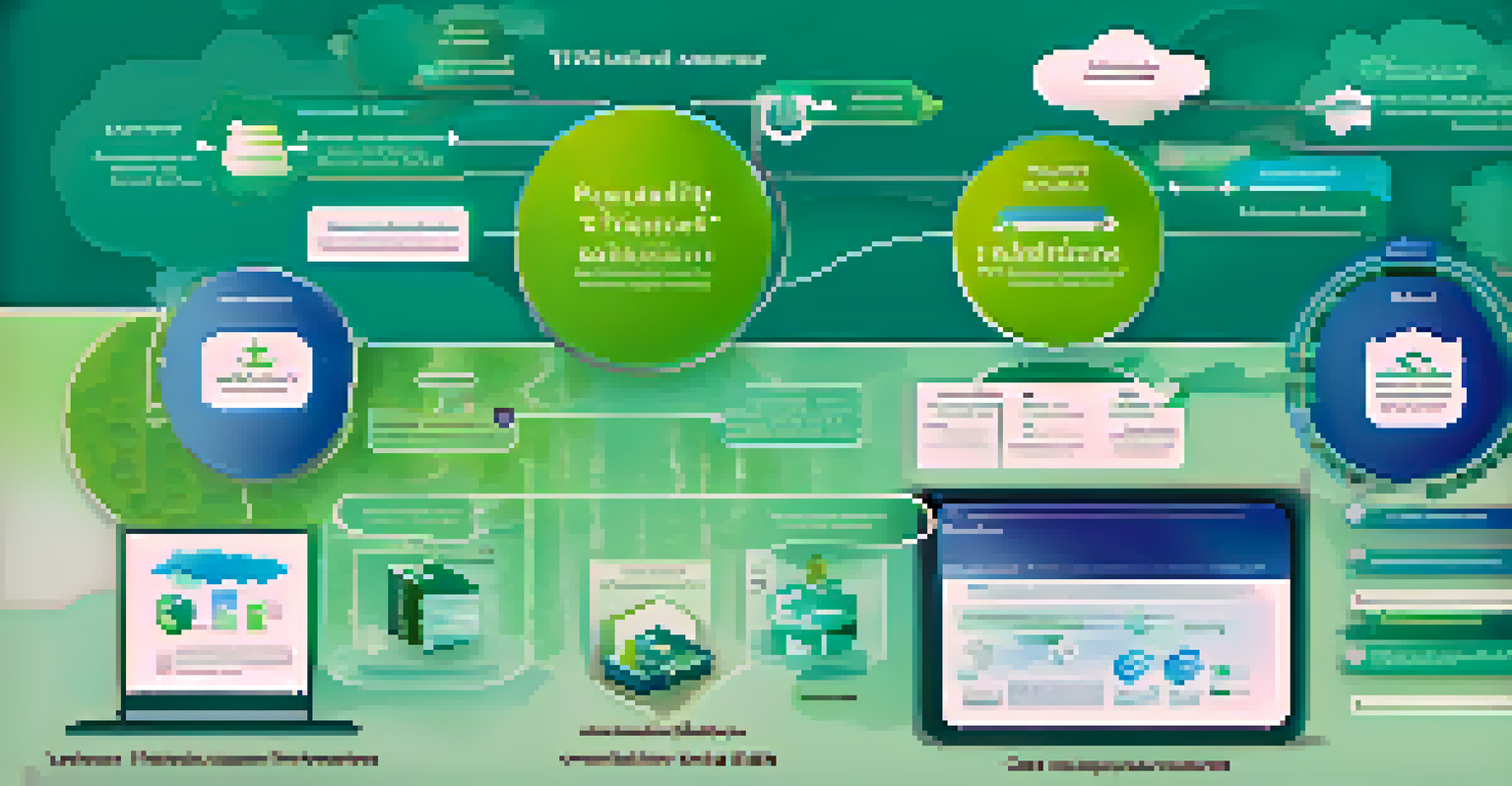Cost Savings Through Virtualization in IT Infrastructure

Understanding Virtualization in IT Infrastructure
Virtualization is the process of creating a virtual version of something, like servers or networks. Instead of relying on physical hardware, virtualization allows multiple virtual systems to run on a single physical machine. This means businesses can optimize resources and reduce reliance on expensive hardware.
Virtualization is a key technology that enables the efficient use of IT resources, allowing businesses to scale and adapt to changing demands.
By using virtualization, companies can consolidate their IT resources, leading to better efficiency. For example, one powerful server can manage the workloads of several older machines. This not only saves money but also simplifies maintenance and management tasks.
In essence, virtualization transforms how organizations manage their IT infrastructure, paving the way for significant cost savings. It's a strategic approach that can streamline operations and enhance flexibility without compromising performance.
Reducing Hardware Costs Through Virtualization
One of the most immediate benefits of virtualization is the reduction in hardware costs. By running multiple virtual machines on a single server, businesses can minimize the number of physical servers they need. This translates directly into lower upfront costs for purchasing hardware.

Additionally, fewer physical servers mean decreased energy consumption. Companies can save significantly on electricity bills and cooling costs, as a single server generates less heat than multiple machines. This not only cuts expenses but also contributes to a more sustainable IT operation.
Cut Costs with Virtualization
Virtualization significantly reduces hardware and maintenance costs by allowing multiple virtual machines to operate on a single physical server.
Overall, the reduction in hardware expenses through virtualization allows organizations to allocate funds toward other critical areas, such as software development or employee training, further enhancing their operational efficiency.
Lowering Maintenance and Operational Costs
Maintaining physical servers can be a costly affair, involving regular upgrades, repairs, and replacements. However, virtualization reduces these maintenance costs by allowing IT teams to manage fewer physical devices. This streamlining can lead to significant savings over time.
The future of IT lies in virtualization, as it offers organizations the flexibility and cost savings needed to thrive in a competitive landscape.
Moreover, virtualization often includes automated management tools that facilitate easier monitoring and maintenance. IT staff can quickly troubleshoot issues across multiple virtual environments without needing to physically access each machine. This efficiency saves both time and labor costs.
By lowering maintenance and operational costs, virtualization not only enhances the bottom line but also frees up IT resources to focus on more strategic initiatives. This shift allows businesses to innovate rather than just maintain.
Enhancing Disaster Recovery Strategies
Disaster recovery is a critical aspect of any IT strategy, and virtualization plays a key role in simplifying this process. Virtual environments can be backed up and restored more easily than physical systems, reducing downtime in case of a failure. This capability can save organizations from substantial financial losses during outages.
Furthermore, virtual machines can be quickly replicated to different locations, ensuring that data is safe even if one site experiences issues. This flexibility in disaster recovery not only safeguards vital information but also minimizes potential disruption to business operations.
Boost Disaster Recovery Efficiency
With virtualization, organizations can easily back up and restore virtual environments, minimizing downtime and protecting vital data during outages.
Investing in virtualization for disaster recovery ultimately leads to cost savings. By reducing downtime and protecting data, organizations can maintain productivity and customer satisfaction, which are essential for long-term success.
Streamlining Software Licensing Costs
Virtualization can also lead to more efficient software licensing, often resulting in cost savings. Many software vendors offer licensing models that are more favorable for virtualized environments, allowing organizations to pay for only what they need. This flexibility can lead to reduced expenses.
Additionally, virtualization enables better utilization of existing software licenses. Instead of having multiple licenses for several physical machines, businesses can consolidate their operations and potentially use fewer licenses across various virtual machines. This leads to a more cost-effective approach.
By streamlining software licensing costs, virtualization not only saves money but also simplifies compliance. Organizations can more easily track and manage their software usage, ensuring they remain in line with licensing agreements.
Improving Scalability and Flexibility
One of the standout features of virtualization is its scalability. As a business grows, its IT needs often change, and virtualization allows organizations to scale their infrastructure quickly and cost-effectively. New virtual machines can be deployed in minutes, ensuring that businesses can adapt to changing demands without significant investment.
This flexibility extends to resource allocation as well. Virtualization enables businesses to allocate resources dynamically based on current needs, ensuring optimal performance without overspending on unnecessary hardware. This adaptability is crucial in today's fast-paced business environment.
Enhance Scalability and Flexibility
Virtualization enables businesses to quickly scale their IT infrastructure and allocate resources dynamically, responding to market demands without overspending.
Ultimately, the ability to scale and adjust resources as needed means that organizations can operate more efficiently and respond to market changes swiftly. This responsiveness not only saves costs but also gives businesses a competitive edge.
Empowering Remote Work and Collaboration
Virtualization supports remote work by allowing employees to access their virtual desktops from anywhere with an internet connection. This capability can lead to increased productivity and employee satisfaction, as staff can work from home or while traveling without compromising access to necessary applications and data.
Additionally, having a centralized virtual environment promotes collaboration among teams. Employees can easily share resources and work together in real-time, irrespective of their physical location. This enhanced collaboration can lead to faster project completion and improved innovation.

By empowering remote work and collaboration through virtualization, organizations can tap into a broader talent pool and create a more agile workforce. This not only helps in attracting top talent but also contributes to overall cost savings by reducing the need for physical office space.
Conclusion: Maximizing Cost Savings with Virtualization
In conclusion, virtualization offers a multitude of cost-saving benefits for IT infrastructure. From reducing hardware and maintenance costs to enhancing disaster recovery and enabling better scalability, the financial advantages are clear. Organizations that embrace virtualization can position themselves for long-term success.
Moreover, as businesses continue to adapt to an increasingly digital landscape, the importance of efficient and flexible IT solutions cannot be overstated. Virtualization provides the tools necessary to navigate these changes while keeping costs in check.
By maximizing cost savings through virtualization, companies can not only improve their bottom line but also foster innovation and growth. It’s a strategic move that pays dividends in today’s competitive market.